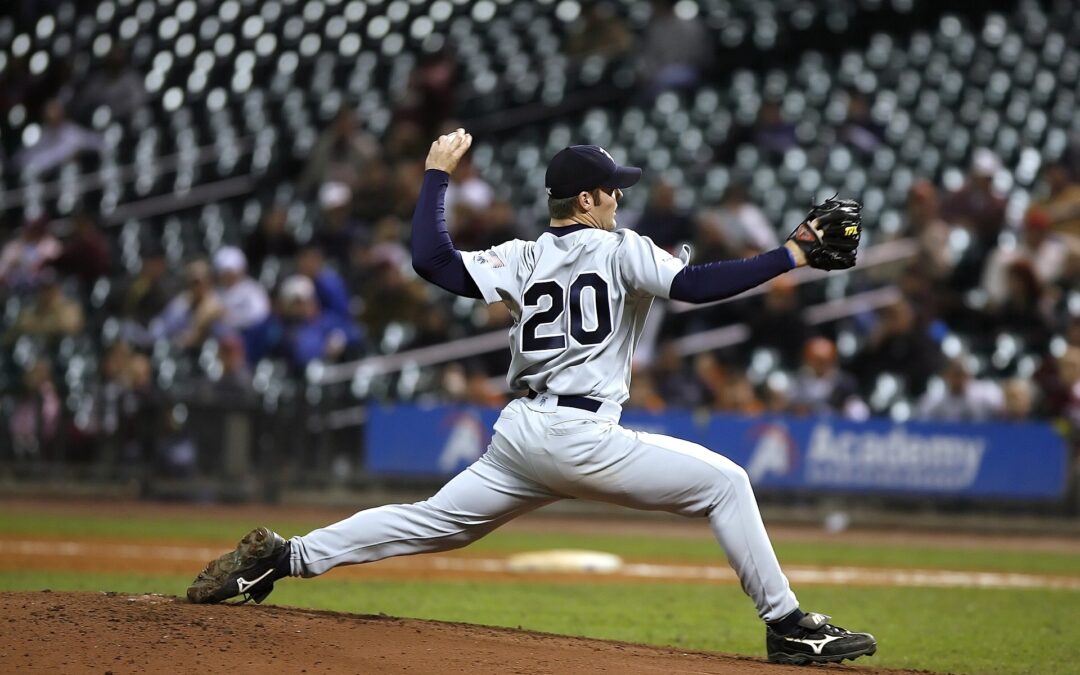Pitching performance and longevity after revision ulnar collateral ligament reconstruction in Major League Baseball pitchers
Marshall NE, Keller RA, Lynch JR, Bey MJ, Moutzouros V. American Journal of Sports Medicine. 2015 April. doi: 10.1177/0363546515579636
https://journals.sagepub.com/doi/10.1177/0363546515579636
Take-Home Message
Two in 3 Major League Baseball pitchers return to pitch in Major League Baseball after a revision ulnar collateral ligament (UCL) reconstruction. Pitchers throw fewer innings and walk more batters after revision surgery.
Summary
Despite years of research on UCL reconstructions, we know little about pitching outcomes after a revision UCL reconstruction. Hence, the authors evaluated return to play and pitching performance of Major League Baseball pitchers who underwent revision UCL reconstruction compared to controls. The authors searched team websites, press releases, and baseball statistics websites to identify 33 Major League Baseball pitchers that underwent a revision UCL reconstruction (revision pitchers). They also found 33 age-matched control pitchers who underwent primary UCL reconstruction, but not revision UCL reconstruction. The authors collected pitching performance statistics (e.g., earned run average, walks plus hits per inning pitched, wins above replacement) for 3 years before and 3 years after UCL reconstruction.
Pitchers underwent revision UCL reconstruction 4.7 years after their primary surgery. Revision pitchers played fewer MLB seasons after revision surgery (3.2 years) than control pitchers (4.0 years). Pitchers returned to professional baseball in 85% of cases and returned to Major League Baseball 66% of the time. The groups did not differ in pitching performance before surgery. However, revision pitchers threw fewer innings (67 vs. 39) and walked batters more frequently (walks/9 innings: 4.02 vs. 4.79) after revision surgery than before surgery. Revision pitchers also threw fewer innings (37 vs. 75) and more frequently walked batters (walks/9 innings: 4.75 vs. 3.49) than control pitchers during the year after surgery.
Viewpoints
The authors found that only 2 out of 3 pitchers can return to the Major League after a revision UCL reconstruction. The low rate of return to play after a second UCL reconstruction may be because of the UCL’s poor tissue quality. Also, pitchers that require two UCL reconstructions may have pitching mechanics or structural adaptations that put the UCL at greater risk and further damage the tissue. Clinicians should educate pitchers about the odds of returning to the MLB after revision surgery to help set realistic expectations.
Pitchers that undergo revision UCL reconstruction also throw fewer innings. A decrease in workload is expected, as coaching staffs often set strict limits on pitch count and innings pitched. However, pitching performance statistics must be analyzed cautiously. A decrease in innings pitched often leads to a decrease in other statistics, such as wins, losses, hits, walks, strikeouts, and wins above replacement. Pitchers do walk batters more frequently after revision UCL reconstruction, so clinicians and coaches may improve post-operative performance by focusing on throwing accuracy throughout rehabilitation.
Questions for Discussion
Why do pitchers walk batters more frequently after revision UCL reconstruction? What can be done to increase the RTP rates after revision surgery?
Written by: Ryan Paul
Reviewed by: Steve Thomas
Related Posts
Hidden in Plain Sight: Improving Quantification of Baseball Pitcher Workload
The Impact of Pitch Counts and Days of Rest on Performance among Major-League Baseball Pitchers
Should We Be Evaluating a Throw Count Instead of Pitch Count?


